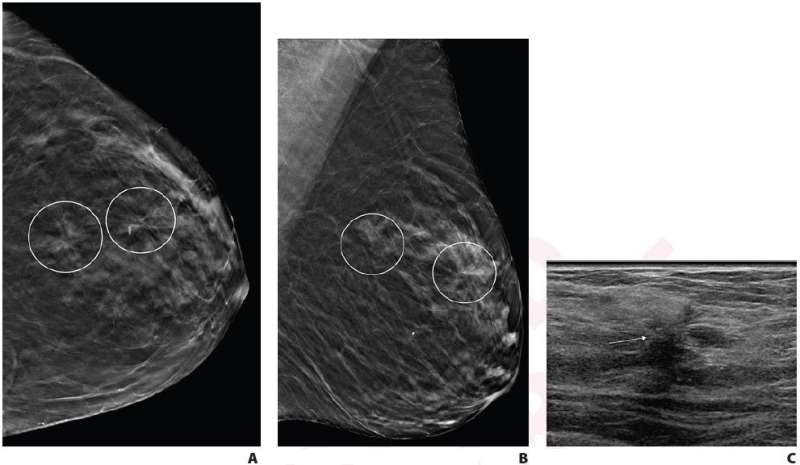Single vs. multiple architectural distortion on digital breast tomosynthesis

According to work published in the American Journal of Roentgenology, for patients with multiple architectural distortion (AD) identified on digital breast tomosynthesis (DBT), biopsy of all areas may be warranted, given the variation of pathologic diagnoses across AD in individual patients.
"Multiple AD, compared with single AD, was significantly more likely to yield high-risk pathology, but there was no significant difference in yield of malignancy," wrote corresponding author Lilian C. Wang, MD, of Northwestern Medicine. "In patients with multiple AD, multiple ipsilateral or contralateral AD commonly varied in pathologic classification: benign, high risk, or malignant."
Wang and colleagues' retrospective study included 402 patients (mean age, 56 years) who underwent image-guided core needle biopsy of AD visualized on DBT between April 7, 2017, and April 16, 2019. Patients were grouped in the single or multiple AD cohort based on the presence of distinct AD areas noted in the clinical report, while the pathologic diagnosis for each AD was based on the most aggressive pathology identified on either biopsy or surgical excision (if performed).
Ultimately, compared with single AD, multiple AD showed a higher frequency of high-risk pathology (53.0% vs. 32.5%, p=.002) but no significantly different frequency of malignancy on a per-lesion or per-patient basis (31.8% vs. 28.2%, p=.56). In 8/24 patients with ≥2 ipsilateral biopsied AD, the ipsilateral areas varied in terms of most aggressive pathology; in 5/10 patients with contralateral biopsied AD, the contralateral areas varied in most aggressive pathology.
"To our knowledge," the authors of this AJR article contended, "this is the first study to compare pathologic outcomes between patients with single and multiple AD visualized by DBT."
More information: Pathologic Outcomes in Single Versus Multiple Areas of Architectural Distortion on Digital Breast Tomosynthesis, American Journal of Roentgenology (2022). DOI: 10.2214/AJR.22.27625



















